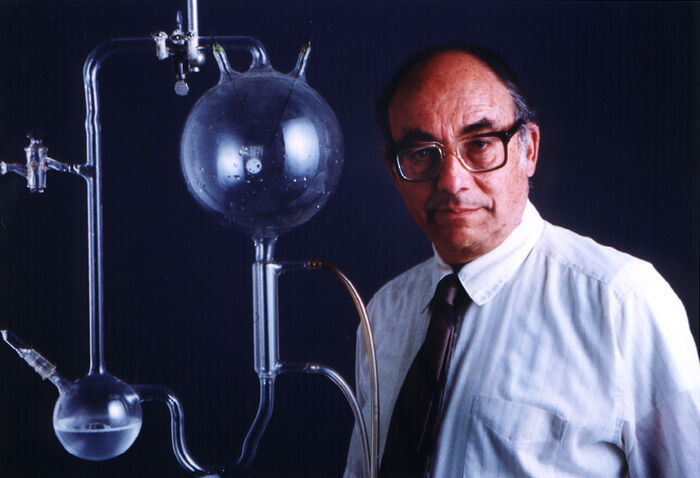A new origin story? Rethinking the evolution of life on Earth
New research suggests that the origin of oxygenic photosynthesis is much earlier than previously thought, calling into question our chronology of life on Earth

Putting a date on the origin of life has been arousing scientific curiosity for decades. Planet Earth is just over 4.54 billion years old, but early signs of life start to emerge in the sedimentary rock record around 3.8 billion years ago. Plate tectonics, heat and pressure over many aeons have made the unequivocal detection of the first life forms difficult.
One thing is certain though – our evolutionary story is deeply intertwined with oxygen’s story. Prior to 2.4 billion years ago, in the Archean eon, the atmosphere was severely depleted in oxygen. From approximately 3.8 billion years ago, it is understood that anoxygenic photosynthesis was at work in these reducing conditions, using iron or compounds like hydrogen sulphide as electron donors to produce sugars.
Then something changed. 2.4 billion years ago, oxidised iron (“red beds”) started to sediment. These beds are formed under certain atmospheric oxygen concentrations, because iron only becomes insoluble when oxidised, thus being held in sediment. Scientists also noticed that uranium, soluble in the presence of oxygen, becomes sparse following the 2.4 billion-year marker. The evidence points to an increasing presence of oxygen in Earth’s atmosphere. This spike in atmospheric oxygen has been termed the “Great Oxidation Event”, marking a shift from a chemically reducing atmosphere, characterized by electron donating compounds, to an oxidising atmosphere that could support aerobic life, as oxygen serves as the terminal electron acceptor in aerobic respiration (“oxidative phosphorylation”).
"Scientists can start to look much further back in time for the first signs of aerobic life forms"
But where did this oxygen come from? The current consensus is that the Great Oxidation Event was roughly coincident with a “new” process: oxygenic photosynthesis. In oxygenic photosynthesis, photons (light energy) are used to split water molecules, and oxygen is produced as a byproduct alongside the essential sugar. Scientists believe oxygenic photosynthesis first started around 2.7 billion years ago. Oxygen, however, remained a trace gas until 2.4 billion years ago, when atmospheric concentrations increased exponentially following the formation of a stratospheric ozone layer, which reduced the penetration of UV rays that catalyse the destruction of molecular oxygen in the atmosphere.
Most scientists assert that cyanobacteria were the first to perform oxygenic photosynthesis around 2.7 billion years ago, living in stromatolites (fossilised microbial mats) and in the surface ocean. The cyanobacteria are recognized as the ancient ancestors of the chloroplasts that exist in today’s plants and algae. With the advent of oxygenic photosynthesis, the threshold had been tipped: sufficient oxygen was now available to support ever-larger life forms, eukaryotes began to evolve, and the new ozone layer allowed water-dwelling organisms to venture forth and roam terra firma. So the story goes.
But as in any good story, there’s a twist in the tale. Through investigating protein evolution in the Photosystem II complex, an integral catalyst in the first-stage reaction of photosynthesis, a research team at Imperial College London suggests that oxygenic photosynthesis could have evolved much earlier in Earth’s 4.5-billion-year history. The significance? Primordial aerobic life could have been supported much earlier.
Photosynthesis occurs in two stages: the light dependent reaction, producing ATP and the electron carrier NADPH, which are then used in the light independent reaction, converting carbon dioxide into glucose. In oxygenic photosynthesis, the light dependent reaction is contingent on two reaction centres: Photosystem I and Photosystem II, the latter deriving ATP and oxidising water molecules. Photosystem II is comprised of two proteins, D1 and D2, found only in photosynthetic eukaryotes. The genetic sequences of these proteins are assumed to have diverged from an identical sequence, a product of a gene duplication event. In plants today, their genetic sequences are only 30% identical. Therefore, by estimating the rate of protein evolution, the research team led by Dr Tanai Cardona could predict when D1 and D2 shared an identical genetic sequence, revealing when oxygenic photosynthesis was first performed by microorganisms.
The authors used a “Bayesian relaxed molecular clock” approach. This is a statistical inference method to estimate the origin of photosynthesis, by estimating the time of divergence between the D1 and D2 proteins based on the mutation rate of their sequences, whilst being sensitive (“relaxed”) to varying rates of evolutionary divergence times.
The research team determined that the time between the identical sequence of D1 and D2 proteins and the versions of these proteins we see in plants today is likely to be at least 1 billion years. This is further supported by another study conducted at Imperial College earlier this year. Oxygenic and anoxygenic photosynthesis both use Photosystem I as a catalyst, but the cores of the enzymes are different. Again, through looking at how long ago the genes evolved to be different, scientists could deduce when oxygenic photosynthesis first evolved. The study found that genetic divergence in Photosystem I may have started more than 3.4 billion years ago, long preceding the presence of cyanobacteria, and contrasting previous understandings that oxygenic photosynthesis arose between 2.5 and 2.7 billion years ago.
These findings are striking. Firstly, the process of oxygenic photosynthesis is suggested to have started much earlier in Earth’s history, a finding strengthened by biomarkers in lake sediments that indicate the presence of aerobic photoautotrophic phytoplankton prior to 3.2 billion years ago. Second, cyanobacteria were not the first to perform oxygenic photosynthesis, but rather a predecessor with an early Archean photosystem must have already acquired the capability. If this is the case, scientists can start to look much further back in time for the first signs of aerobic life forms. A new protagonist in the evolutionary story, supplanting cyanobacteria, needs to be discovered.
 News / SU reluctantly registers controversial women’s soc18 December 2025
News / SU reluctantly registers controversial women’s soc18 December 2025 Features / Should I stay or should I go? Cambridge students and alumni reflect on how their memories stay with them15 December 2025
Features / Should I stay or should I go? Cambridge students and alumni reflect on how their memories stay with them15 December 2025 News / Dons warn PM about Vet School closure16 December 2025
News / Dons warn PM about Vet School closure16 December 2025 News / Cambridge study finds students learn better with notes than AI13 December 2025
News / Cambridge study finds students learn better with notes than AI13 December 2025 News / Uni registers controversial new women’s society28 November 2025
News / Uni registers controversial new women’s society28 November 2025









